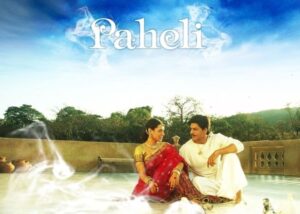This film was screened as part of ‘Twenty First’, an ongoing film festival at Faculty of Fine Arts at MS University.
Date of Screening: 7th December, 2013
Director: Akira Kurosawa
Country: Japan
Most great artists contemplate on the mysteries of nature, love, life and death, whether its Emily Dickinson, William Blake, Lord Byron, Tolstoy, Shakespeare or Edgar Allan Poe among poets and playwrights, or Kurosawa and Fellini among directors. The manner of expression of their thoughts may vary, but the essence remains the same. Each one takes a road, discovers secrets at the horizon and journeys on till life extinguishes.
These revelations may’ve been articulated in other forms of text, music and cinema already, but they only gain significance for the traveler through self-discovery. That’s perhaps why such persons cannot be accused of ‘imitation’ or ‘plagiarism’ – what they write/produce is felt in their work. Their insight rings true, and that is why such experiences never get old for audiences.
On seeing Kurosawa’s Dreams, I was reminded of Fellini’s laudatory works such as La Dolce Vita and 8 ½. There is a celebration of the gift called ‘life’ in both the films; while Fellini’s routines are more circus-like carnivalesque, Kurosawa evokes a similar celebration through rituals and Kabuki theatricality. In the concluding scene, he includes a funeral in which the men, women and children of a mystical village worshiping nature celebrate the event instead of mourning.
Kurosawa’s film focuses less on women, and the protagonists in Dreams are multiple, but we find him constantly searching for the ‘ideal state’ in a puzzling, unpredictable environment filled with contradictions. Fellini has being doing the same thing in his films with Marcello Mastrioianni as his medium. Kurosawa’s Dreams may be too ponderous at times, and we certainly feel as though the director held on to one action until he himself could discovery something about the moment. Yet, what he puts on film is his own vision, and that makes Dreams both fascinating and original. And the visuals, as expected, are breathtakingly captivating. Steven Spielberg once called Kurosawa ‘the pictorial Shakespeare of our time’, and rightfully so; even if you’re left bored by the end of Dreams, you take the images home with you. And these images, etched in your memory, may just be enough to bring you back to this film someday.
Faculty of Fine Arts at MS University screened this film on 7th December as a part of their ‘Fest Twenty First’ film festival, which highlights the works of some of world cinema’s most prolific directors. Kurosawa’s name on the brochure certainly thrilled me as I was greatly impressed by the involving storytelling in his classic Rashomon. I was surprised however when I heard that the fest was going to screen one of his lesser known films which was based on his actual dreams.
On untested audiences who may hardly be aware of such directors, I thought it would’ve been more suitable to screen a film that brought universal appreciation for the director. For example, I now believe I should’ve seen Robert Altman’s earliest films instead of beginning with the director’s final film, Prairie Home Companion.
Post screening, there wasn’t any particular reaction. Most simply got up and walked out. Had the organizers screened Rashomon, I bet half of them would’ve rushed to rent a DVD of Ikiru or perhaps Seven Samurai.
How many would know about Kurosawa’s recurrent use of woods, mist and fog, rain and snow, light and dark, and other elements of nature in his films? How many would want to bear the indulgences of a director they have no clue about? A devout Kurosawa fan would forgive the Master for prolonging a deathly slow dance in his second dream to almost four minutes, but for others, it’s a sheer test of patience. The film fest organizers, whose apparent purpose is to raise awareness of
world cinema in a medium-sized city in Gujarat, should’ve known better. An elderly audience member whispered to her husband after the screening “It’s a different film”. That perhaps translates to ‘I didn’t understand s**t, but since it’s being shown in a film festival, I guess it has to be something different’.
To put it simply, Kurosawa puts on screen eight dreams he actually had. They seem less like dreams and more like produce of daydreams; critic Hal Hinson, in his lukewarm review, said they were ‘Pontifications’ or Sermons’ rather than dreams. He criticized the film, and especially the last five segments, for clarifying their motives and social statements a little too obviously, and even called them ‘an epic after-school special’ at one point. I’m not saying this with certainty, but I think in Eastern cultures, especially in the field of theatre, there is frequent resort to speaking out the themes and morals of the story. So, while I didn’t hate the sermonizing or feel they were over-used, I thought Kurosawa could’ve trimmed the film considerably and achieved the same impact.
The first dream, about a kid scurrying off to the forest after learning about a wedding of foxes, is called ‘Sunshine through the Rain’. The cinematography by Takao Saito and Masaharu Ueda is luscious and eye-catching from the opening shot itself, in which the kid wearing a bluish white polka dotted kimono stands outside his house under the roof of the gate, which protects him from the rain. Despite his mother’s warnings against doing so, his curiosity takes him to the woods to watch the private wedding of the foxes. Kurosawa captures his little frame by keeping him in the center of an extremely long shot, with the surrounding area occupied by tall trees. The moment he sees the foxes, the kid scurries behind a tree and watches the entire procession. The masked dancers move at a snail’s pace, and the camera doesn’t move much either. After the kid returns home, his mother, crossed at his actions, asks him either to kill himself with the dagger she hands him or to ask the foxes for forgiveness. The segment ends with the kid walking through a meadow of lush grass and scintillating flowers.
In the second dream, a slightly older kid finds out that his family had a hand in chopping off every single peach tree in their orchard during Hina Matsuri, a festival celebrated when peach blossoms are in full bloom. Live dolls representing the peach trees begin another dance, and though I admit the costumes were grand, I felt bothered by the length of these sequences. The third story, The Blizzard, simply shows four-five guys clambering silently through the snow for about four minutes before one opens his mouth. While the opening is quite a dullard, the closing moments of the third dream are unforgettable. It shows an angel in white waking one of the exhausted mountain climbers, trying to comfort him by covering him in blankets of grass and then attempting to choke him to death. The most breathtaking moment comes when we see her hair blowing furiously in the wind and then with one swoop, she ascends into the air and flies away.
Dream four is about a Japanese commander trying to forget certain misguided actions he had made while in army during the Second World War which cost the lives of hundreds of soldiers. The theme of ‘loss’ plays a major role in most of the segments. The fifth dream is about an artist getting lost in Van Gogh’s paintings; he meets an aged, one-eared (we are informed he clipped off the other only to get a self-portrait right) Van Gogh (played by Martin Scorsese), busy sketching in the middle of the field. After following him through various paintings, the man stops as Van Gogh disappears into the unknown. The paintings come alive and we should credit George Lucas’ special effects team Industrial Light & Magic for this.
The following dreams are bleaker, with dream six involving explosions of nuclear power plants near Mount Fuji and the resulting chaos, while the seventh dream taking place in a ravaged world devoid of human civilization where demons reside in agony. The eighth dream, ‘Village of the Watermills’ has been mentioned at the beginning of the review.
The images helm the film to new heights and intensify the impact of the themes. The problematic elements are brushed off by the vivid colors that hypnotize. So, while Kurosawa’s Dreams is far from his best effort, the beautiful display of scenery never fails to dazzle. And his dreams aren’t as weak as some critics say.






[…] Link to Review Here: http://ourvadodara.in/ms-university-faculty-of-fine-arts-film-festival-akira-kurosawa-dreams […]